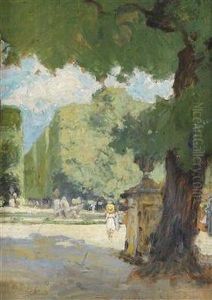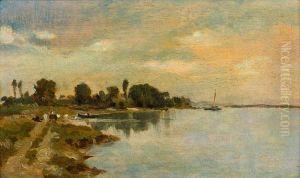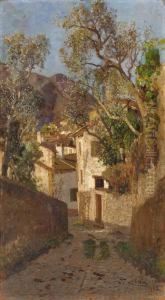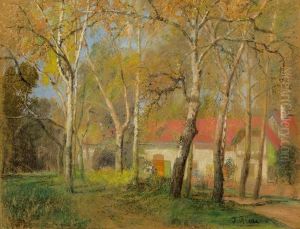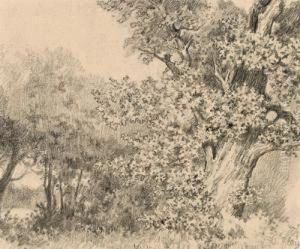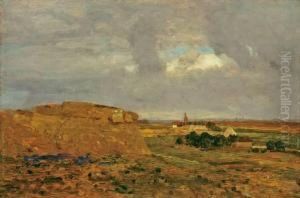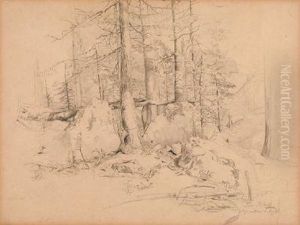Tina Blau Paintings
Tina Blau was an Austrian landscape painter, born on November 15, 1845, in Vienna, Austria. She is recognized for her significant contribution to Austrian art, especially for her role as a female artist in a male-dominated field during the 19th century. Blau's father, who was a physician, supported her artistic talents from a young age. She received her initial training from her father and later studied under various local artists, including August Schaeffer and Wilhelm Lindenschmit.
In 1860, at the age of 15, Blau continued her education at the Vienna Women's Academy, where she was taught by landscape painter Emil Jakob Schindler. The influence of the Barbizon school, which emphasized painting outdoors (en plein air), was evident in her work. Blau's style was characterized by its naturalistic approach and her use of light and color, which she skillfully employed to capture the varying moods of the landscapes she painted.
Tina Blau's travels across Europe, including a significant period in Holland, further developed her painting style. Her exposure to the Dutch landscape and its light played a crucial role in shaping her artistic vision. Upon her return to Vienna, she continued to exhibit her work, gaining recognition and respect within the art community.
In 1883, Blau married the artist Heinrich Lang, but she kept her maiden name professionally. She became an influential figure in Vienna's art scene and was a member of the Vienna Artist's Association. Despite facing gender-based discrimination, she paved the way for future generations of female artists.
Blau's teaching career was also notable. She co-founded the Art School for Women and Girls in Vienna and taught there for many years, mentoring a new generation of artists. Blau's commitment to education and the arts established her as a prominent figure in Vienna's cultural life during her time.
Tina Blau's work was widely exhibited during her lifetime, including at the World's Columbian Exposition in Chicago in 1893. She received numerous awards and honors for her contributions to art. Blau continued to paint and exhibit her work up until her death on October 31, 1916, in Vienna. Today, her paintings are held in various collections and museums, and her legacy as a pioneering female artist in the landscape genre endures.





















